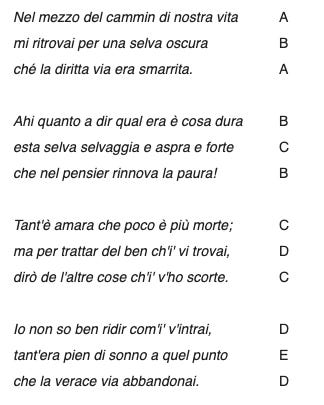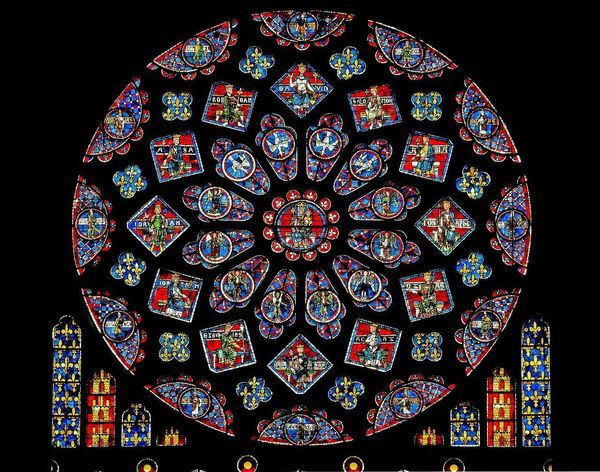Stumbling Into Beauty & Meaning
How Sir Roger Penrose's procrastination led him to a serendipitous discovery
From a wonderful Spectator piece about the Nobel-winning physicist Sir Roger Penrose:
One of the paradoxes of research is that, time and again, the most far-reaching discoveries are made not by focusing on the practical problems of the day but by following your curiosity. Put another way, when your work, and what you do to avoid it, become the same thing, that’s when the breakthroughs come. Penrose tells a story that illustrates this perfectly. ‘Someone had invited me to give a talk at London South Bank University and I was really overdue with my reply. Instead of replying, all I could do was stare at the university logo on the letterhead: a pentagon with five pentagons around it.’ What bothered Penrose was that there were gaps between the external pentagons. Unlike hexagons, pentagons don’t fit together seamlessly.
He began wondering what new shapes would be required so he could fill in the gaps, and then extend the pattern without new gaps arising. It seemed it wasn’t possible with just one new shape. After a while, he had worked out a way to solve the puzzle using six new shapes. But Penrose wasn’t satisfied with six.
‘I thought, I wonder if I can do better? So I got it down to four tiles. And I was really proud of that. Then I fiddled around and I got it down to two. But my reaction was disappointment. It was just too damn easy. I felt it couldn’t be new.’
But it turned out the result of his labours, known as ‘Penrose tiling’, was new. It also has a mathematical and aesthetic beauty that interconnect in intricate ways, with deep links to the structure of quasicrystals and the theory of computation. Penrose tiling decorates the floor of the entrance hall at the London Institute for Mathematical Sciences where I work.
Aren’t they beautiful?
One more clip from the piece:
The running theme in my interview with Penrose is his artistry, which is at the heart of his broad and deep insights into physics. I put it to him that one of the great mysteries of physics is that the laws describing the universe have such inherent beauty. So much so, in fact, that this same beauty is often used as a guide to discerning which laws are true.
Penrose sort of agrees with this, but you’ll have to read the whole thing to see what he says. I’m interested in the insight that the structure of reality is fundamentally beautiful. It’s not the same thing as saying that it is pleasing to the senses (though aesthetic pleasure is part of beauty). It’s a deeper claim, one that says order and harmony is fundamental to the structure of reality. I’m probably getting out over my philosophical skis here, but I think it is to claim, more or less, with Aquinas that beauty is a property of Being.
Skittering back to the safety of the beach towel, I confess that I lack the intellectual training to do more than dip my toes into the deep meaning of that claim. But I have a few thoughts. I didn’t know what Penrose tiling was until reading the Spectator piece, and looking up examples, but they sent me to my bookshelf, and to this passage from God And The World, one of the book-length interviews that Peter Seewald did with Cardinal Joseph Ratzinger, who was to become Pope Benedict XVI. The cardinal said:
The Christian picture of the world is this, that the world in its details is the product of a long process of evolution but that at the most profound level it comes from the Logos. Thus it carries rationality within itself, and not just a mathematical rationality — no one can deny that the world is mathematically structured — not, that is to say, just an entirely neutral, objective rationality, but in the form of the Logos, also a moral rationality.
[Seewald:] But how can we know that with such certainty?
[Ratzinger:] Creation itself offers indications as to how it should be understood and upon what terms it should be accepted. This can be obvious even to non-Christians. But faith helps us recognize the clear truth that in the rationality of creation is to be found not only a mathematical but also a moral message.
Ratzinger goes on to discuss what C.S. Lewis identified in The Abolition of Man as the Tao, which he defined as “the doctrine of objective value, the belief that certain attitudes are really true, and others really false, to the kind of thing the universe is and the kind of things we are.”
Ratzinger talks about how similar myths recur across cultures. Take the story of the Tower of Babel, which the future pope reads as a warning against attempting to usurp the Divine by humanity’s own efforts, and against trying to create a universal civilization by means of technology. It’s a story about the ruin that comes upon humankind when it tries to be God. Stories like this are common in the mythological treasury of mankind. They speak of a deep collective wisdom — of a Tao. This is not the same thing as relativism, but rather is testimony to a core moral order perceivable by men.
Last night I read this striking line from Marshall McLuhan, who was a practicing Catholic:
"Myth is anything seen at very high speeds; any process seen at a very high speed is a myth."
Could we say, then, that myths are beautiful, in that they illustrate the moral order by representing a process at a very high speed? And is it not the case that one property of true beauty (as distinct from superficial beauty) is that it is capable not only of pleasing us aesthetically, but also giving us something to contemplate intellectually? And spiritually?
I have traced my spiritual awakening as an adult to an encounter with awe in the Chartres cathedral. I did not understand anything about that moment, other than that I had stumbled into the presence of God. To go back to a McLuhan passage I wrote about in last night’s newsletter, I was all percept; the concepts would come later. At some point within the past decade, I began reading books about the Chartres cathedral, and began to understand the staggering mathematical genius that went into its construction. None of it was accidental; all of it was precisely constructed to illustrate meaning. The entire medieval Christian cosmos was designed into the stone. I did not know what I was reacting to, and certainly could not have “read” the cathedral at age 17. What I perceived, though, was a dazzling symphony of order — layers and layers of harmonies, all of which pointed beyond themselves.
You can perceive this in Dante’s Divine Comedy. Unfortunately some of the beauty is lost in translation, like wearing sunglasses on a visit to the Uffizi. Dante constructed the entire tripartite poem — over 14,000 lines — in a rhyme scheme he devised for it: terza rima. Each Italian line consists of three lines of 33 syllables, interlocked links in a chain in this rhythmic pattern: ABA/BCB/CDC, and so on. Here are the opening lines from the Inferno, part one of the Commedia:
Dante ends cantos with either single lines or couplets, because it could go on forever like this without knotting the ends. The point is, Dante structures the poem geometrically in patterns of threes, to reveal the Trinitarian nature of reality. (Note: to reveal what is really there, not to impose a human concept on inert matter.) This is harder to see in translation, because it’s impossible to reproduce Dante’s terza rima faithfully in English. You see what I mean, though, about missing some of the beauty of the poem.
Thinking about Chartres, about Dante, and about Penrose tilings, brings to mind a quality of beauty identified by Elaine Scarry, in her wonderful little book On Beauty And Being Just. She writes that all beautiful things share an “impulse toward begetting.
It is impossible to conceive of a beautiful thing that does not have this attribute. The homely word “replication” has been used here because it reminds us that the benign impulse toward creation results not just in famous paintings but in everyday acts of staring; it also reminds us that the generative object continues, in some sense, to be present in the newly begotten object. It may be startling to speak of the Divine Comedy or the Mona Lisa as “a replication” since they are so unprecedented, but the word recalls the fact that something, or someone, gave rise to their creation and remains silently present in the newborn object.
For Dante, the generative impulse behind the Divine Comedy was his love of Beatrice and her beauty — but, as she tells him when they are reunited at the peak of the mountain of Purgatory, he erred grievously when he made an idol of her, instead of seeing her iconographically: as a medium through which the glory of God shone, and a sign pointing him to the divine origin of all beauty and love.
Sir Roger Penrose found that the design beauty of what would come to be known as Penrose tiling produced fruits in mathematical computation. For me, the beauty of Chartres generated religious conversion, and new life. Later, the beauty of the Divine Comedy served as map and a guide leading me out of a period of great despair. The beauty of my wife led me to marriage (23 years ago tomorrow), and has produced three children. And on and on.
What is so wonderful — literally, wonder-full — about the Divine Comedy is how Dante reveals that life is a pilgrimage towards greater revelation of light, of beauty, of harmonious order, and of love. All of these are the same thing in God. As Dante progresses through Paradiso, his ability to see depends on his growing in holiness. He is too weak spiritually to behold the full glory of God, shining through the heavenly beings; the divine light shining through their forms would annihilate him. Gradually, though, as his intellect, his nous, become illumined, he is able to perceive more truth, behold greater love, become more united to God, and filled with the Light.
There’s a reason I titled my book How Dante Can Save Your Life. I wasn’t kidding. And this is the spirit in which I’m trying to write this newsletter: moving forward towards sight, and light.
The Mysterious Math Of The Incarnation
Along these lines, I can’t commend to you strongly enough Christopher Baglow’s wonderful Christmas essay in Church Life Journal about the theological message encoded in the mathematics of Christ’s genealogy and the North Rose Window of the Chartres Cathedral. Baglow talks about the dodgy people who ultimately produced the Messiah:
And that is what Matthew calls, “the Book of the Generation of Jesus Christ.” The point is too obvious to labor any longer: Jesus came from a family of homicidal maniacs, cheats, cowards, adulterers and liars, a real-life Game of Thrones. And this brings us to the North Rose of Chartres. There, at its center, the Blessed Virgin Mary and the Infant Jesus on her lap. She is surrounded by a circle of descending doves—the Holy Spirit—above her, and adoring angels below her. And then we meet 12 of the poor crooked people whose depravity I just finished narrating. David is at the top, then (considered clockwise, and non-chronologically) Solomon, Abijah, Josiah, Uzziah, Ahaz, Manasseh, Hezekiah, Jotham, Jehoram, Asa and Rehoboam, each robed in regal splendor, without a single indication of their misdeeds. And the sinful chaos of their lives is sublimated into an overlapping, threefold geometry that retains both the divine and the earthly in symmetrical relation to each other.
Here is the genealogy of Jesus depicted in that Chartres window. At the center is the Christ child, seated on the throne of his mother’s lap:
Here’s where it gets to be mind-blowing. I won’t spoil it by quoting from Baglow’s description of both the apparent geometric meaning, and a theological message that can only be perceived in this image mathematically. You have to read it yourself. Baglow concludes:
The mathematical message is this: God is outside of, greater than, the visible figure, all the while intimately present to it, causing it to become something beautiful. He is shaping history not through coercive action, but through his presence, through his word. The message of the genealogy, then, is that you cannot sink too low to be outside of God’s plan of salvation. For if these bandits, thieves, child killers and greedy potentates can be the path to salvation, what keeps you or I from receiving the mercy and saving grace of God?
We do not know who designed the windows at Chartres. We do not know who designed any part of Chartres. But they saw far, and they saw deep.
‘Friendless Churches’: A Poem
I promised y’all that I would never publish anybody’s name without your explicit permission. That’s why I’m not posting the name of the reader who sent me this poem, inspired by last night’s newsletter about “friendless churches.” I didn’t open the email until late tonight, and I’m sure reader K.H. is already asleep. K.H., if you want me to identify you, please just say so, and I’ll tell readers tomorrow who you are. This is a lovely poem:
Friendless Churches
Take me there and let me sit, neither lonely
Nor friendless, in a pew close enough to earth
To set my feet on solid ground while I lift my eyes
To what goes largely unseen.
Much has changed but hard times
Remain much the same. This pew
Is hard and brittle, Dry. Like lives. like
Mine. Wells dry up and gravestones go
Crooked in old age i look beyond,
The church graveyard but fail
To find a child at play or flower
to lighten the day. No feather to tickle
Or melody sprung from fruited bough.
Only a single mud-splattered nest sharing
Space with final resting places. Grey clouds fall
And try to cancel songs i've sung and
Though I try to sing again, tears fall instead,
Though silent, they speak a language
All their own, beyond the pages of wordy
Books in tear-mist heaven blown.
Subscribing To This Newsletter
Tonight I set up the mechanism for allowing y’all to subscribe to this newsletter. The last free version will appear this Friday night, January 1. The first paid one will appear on Monday January 4. In Friday’s letter, I will include the information you need to set up your subscription. I have it set to five dollars per month, or $50 for the whole year (a savings of ten dollars — see, journalism majors can do math sometimes!). I have an option on there for patrons who want to support this blog at a high level being able to get a one-hour private Zoom chat each month, or a half-hour one, depending on the level of support. We can talk about anything you want, provided you’re not a weirdo. Well, scratch that: I like weirdos — I recognize my own people! — but you can’t be a scary or mean weirdo.
It would make more sense for me to start with the subscription link now, but I’ve never done Substack before, and I would hate for the system to charge you for the month of December by accident. It’s probably possible for me to keep that from happening even as you sign up early for a subscription. I’ll work on that tomorrow. I just wanted you to know that I’m not going to leave you hanging on how to subscribe. Coming Friday. Also, I’m going to try to keep the archive of everything I’ve written here since I started this blog on October 29 publicly available, if the Substack system will allow it.






